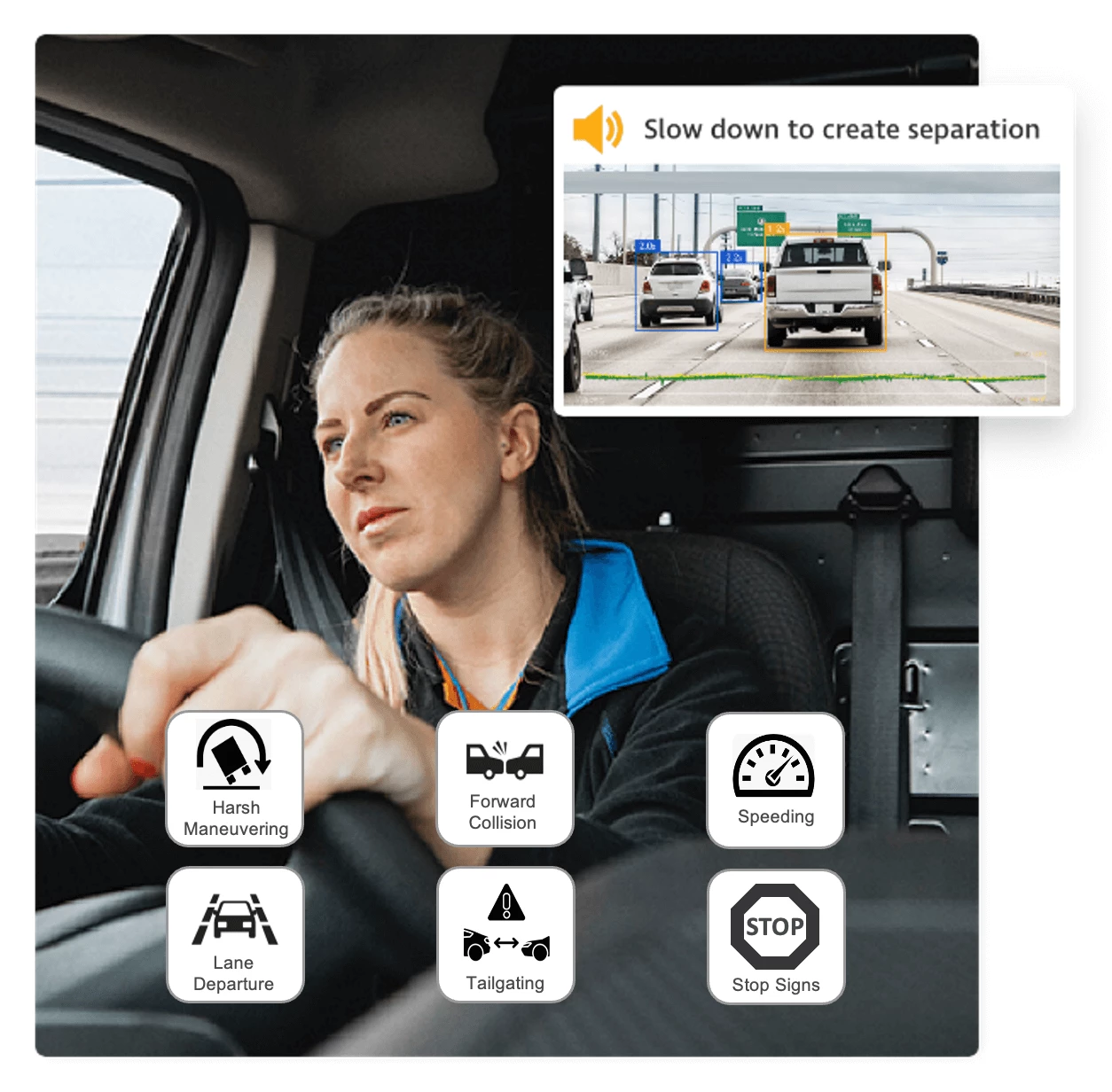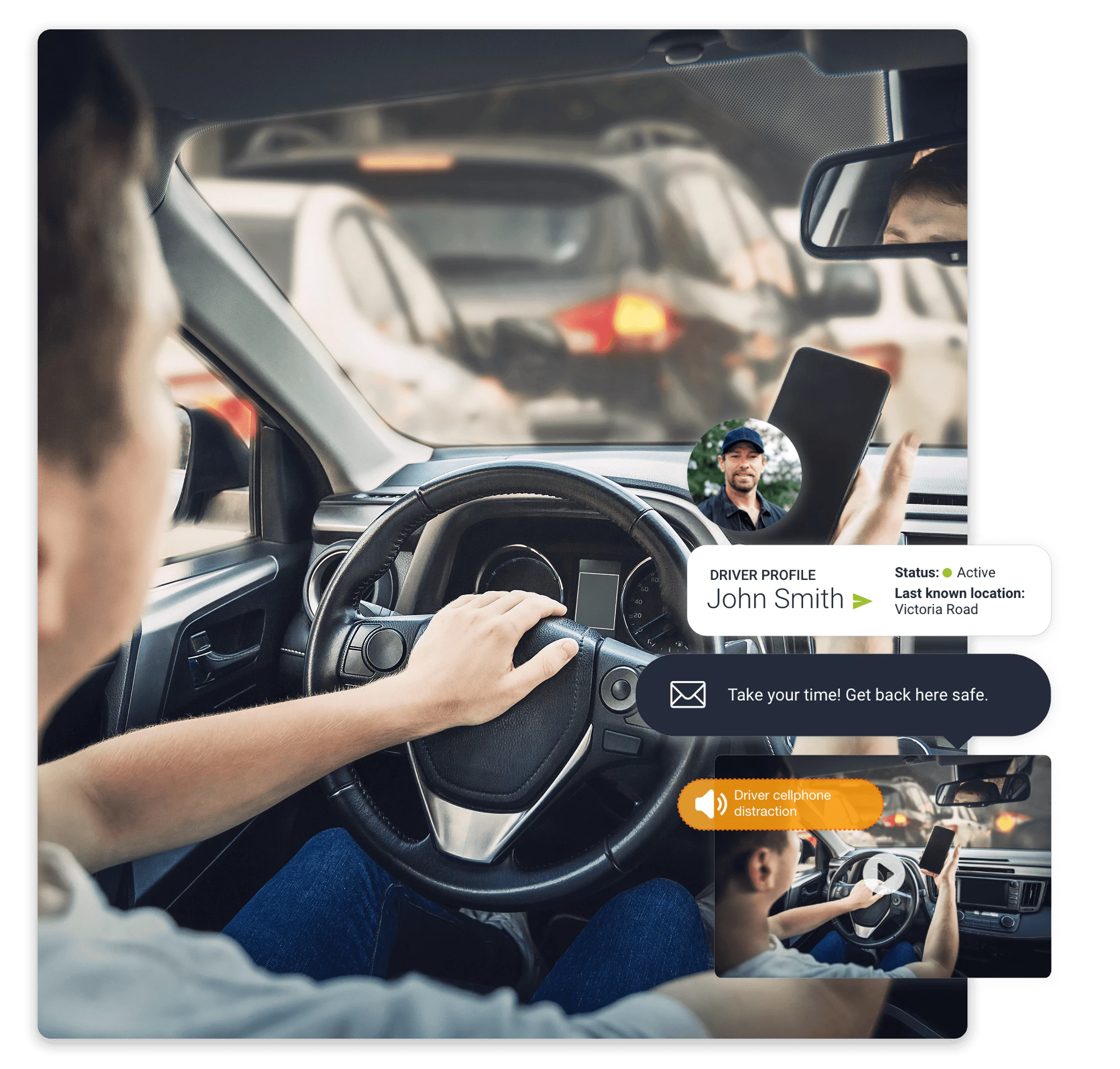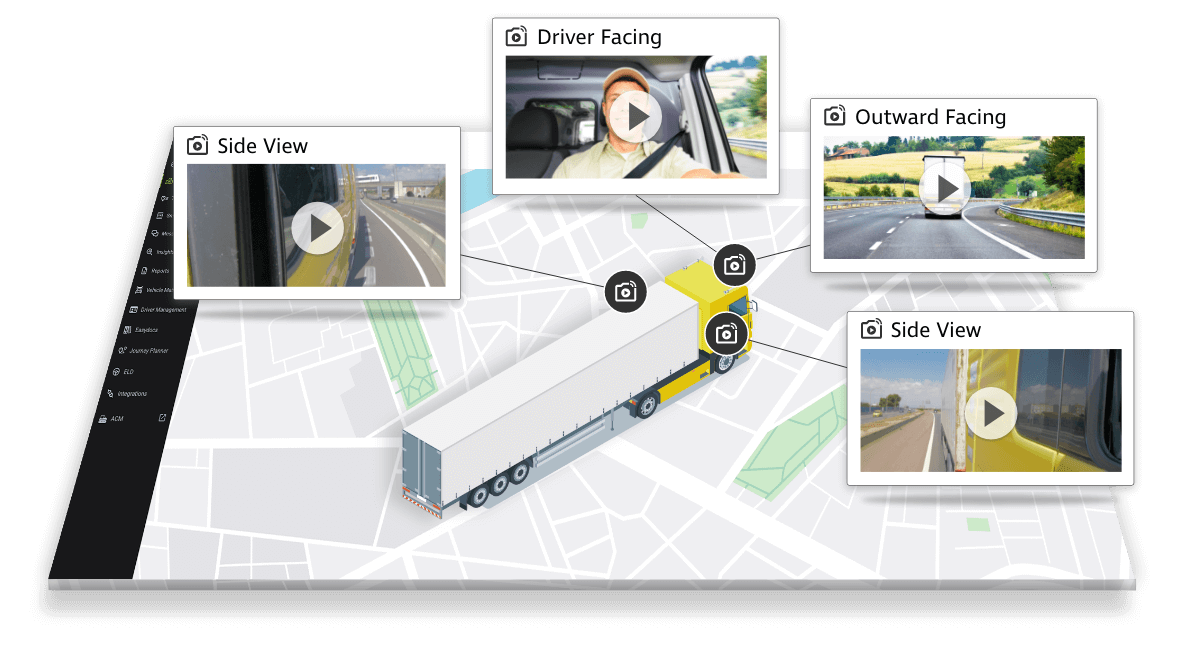Today’s fleet technology is driven by promoting safety by improving on-road behaviours. But have you wondered exactly how that works when it comes to video telematics? Commercial vehicles face complex driving environments every day, and the ability to proactively identify risky behaviours can mean the difference between a safe journey and costly collisions.
This is where video telematics, combined with advanced driver assistance systems (ADAS) and driver status monitoring (DSM), plays a pivotal role. The latest in video telematics innovations, like Teletrac Navman’s Multi IQ Camera, harnesses these powerful technologies to provide real-time alerts that help drivers make safer choices on the road, reducing incidents and enhancing overall fleet performance.
Understanding ADAS and DSM: The Technology Behind Safer Driving
Many drivers are already familiar with ADAS and DSM technologies as standard features in modern passenger vehicles. ADAS includes systems designed to assist drivers by providing warnings or automated interventions to avoid collisions and maintain safe driving practices. DSM focuses on monitoring the driver’s condition to detect distractions or fatigue, both of which are major contributors to collisions.
In fact, our 2025 distracted driver edition of the Mobilizing the Future of Fleets report uncovered that half of businesses state distracted driving as a direct impact on costs. The survey reveals mobile phone use as the leading cause of driver distraction, with a staggering 68% of respondents identifying it as the primary factor. That’s where video telematics and its ability to measure ADAS and DSM metrics can help to make improvements in behaviour.

What is ADAS?
Advanced Driver Assistance Systems (ADAS) use sensors, cameras, and algorithms to monitor the vehicle’s surroundings and driving conditions. These systems provide real-time alerts to help prevent collisions, maintain lane discipline, and adhere to traffic laws.
Common ADAS features include:
- Forward Collision Warning: Alerts the driver if a collision with a vehicle or obstacle ahead is imminent.
- Sign Posted Speed Recognition: Detects and alerts when the vehicle exceeds posted speed limits.
- Lane Adherence & Tailgating Detection: Monitors lane positioning and the distance to the vehicle ahead.
- Stop Sign & Traffic Light Violation Alerts: Helps prevent running red lights or stop signs.
- Harsh Manoeuvre Detection: Identifies aggressive driving actions like harsh braking, acceleration, or cornering.
What is DSM?
Driver State Monitoring (DSM) focuses on the driver’s behaviour and condition behind the wheel. It detects signs of distraction or fatigue, which are leading causes of crashes worldwide:
- Distracted Driving Detection: Identifies when the driver is using a phone or otherwise distracted.
- Drowsy Driving Detection: Monitors signs of fatigue, enabling timely warnings that prompt drivers.

How it Works: Driving Safer Decisions on the Road and Beyond
One of the most powerful features of modern video telematics solutions is their ability to deliver real-time alerts that empower both drivers and fleet managers to make smarter, safer decisions—immediately and over time.
When risky behaviours such as harsh braking, tailgating, distracted or drowsy driving, speeding, or traffic violations are detected via the ADAS and DSM system, audio alerts are sent directly to the driver in the cab as they occur. This instant feedback allows drivers to recognise unsafe actions and adjust their behaviour on the spot, encouraging safer driving habits throughout every journey.

Simultaneously, these events are communicated in real-time to back-office teams via the fleet management platform. Fleet managers receive detailed notifications, accompanied by footage and telematics data, enabling them to monitor driver behaviour as it unfolds and respond promptly when necessary. This continuous flow of information keeps both drivers and managers aligned in their commitment to safety and compliance.
Beyond immediate incident prevention, a video events workflow serves as an effective coaching tool. You can manage events as they come in, flag them for review by the right person in your team and manage them before they become issues. By providing a simple means for you to analyse patterns and reviewing video evidence linked to alerts, fleet and safety managers can identify specific training needs and provide targeted coaching based on objective, data-driven insights.

Why ADAS and DSM Matter for Commercial Fleets
While ADAS and DSM are now standard in new passenger vehicles, their application in commercial fleets is transformative. While newer models of trucks may have these functions available, laying out the capital for a new truck is very expensive and not something you can easily upgrade. Beyond that, when built into vehicles, they only provide warning to the driver, and never raise an alert to the back-office to keep an eye on behaviours like Video Telematics can. By incorporating these technologies, like the Multi IQ Camera, you can:
- Promote safer driving cultures by making drivers more aware of hazards and their own behaviour
- Minimise collision and event rates and the associated financial and reputational costs
- Support driver wellbeing by detecting fatigue and distraction early
- Enhance compliance with road safety regulations and company policies
Take your fleet’s safety and performance to the next level with Teletrac Navman’s Multi IQ Camera. Discover how combining video telematics with ADAS and DSM alerts can empower your drivers to make smarter, safer decisions every mile of the journey.
Drive safer, smarter, and more confidently with Teletrac Navman. For more information and to request a demo.

